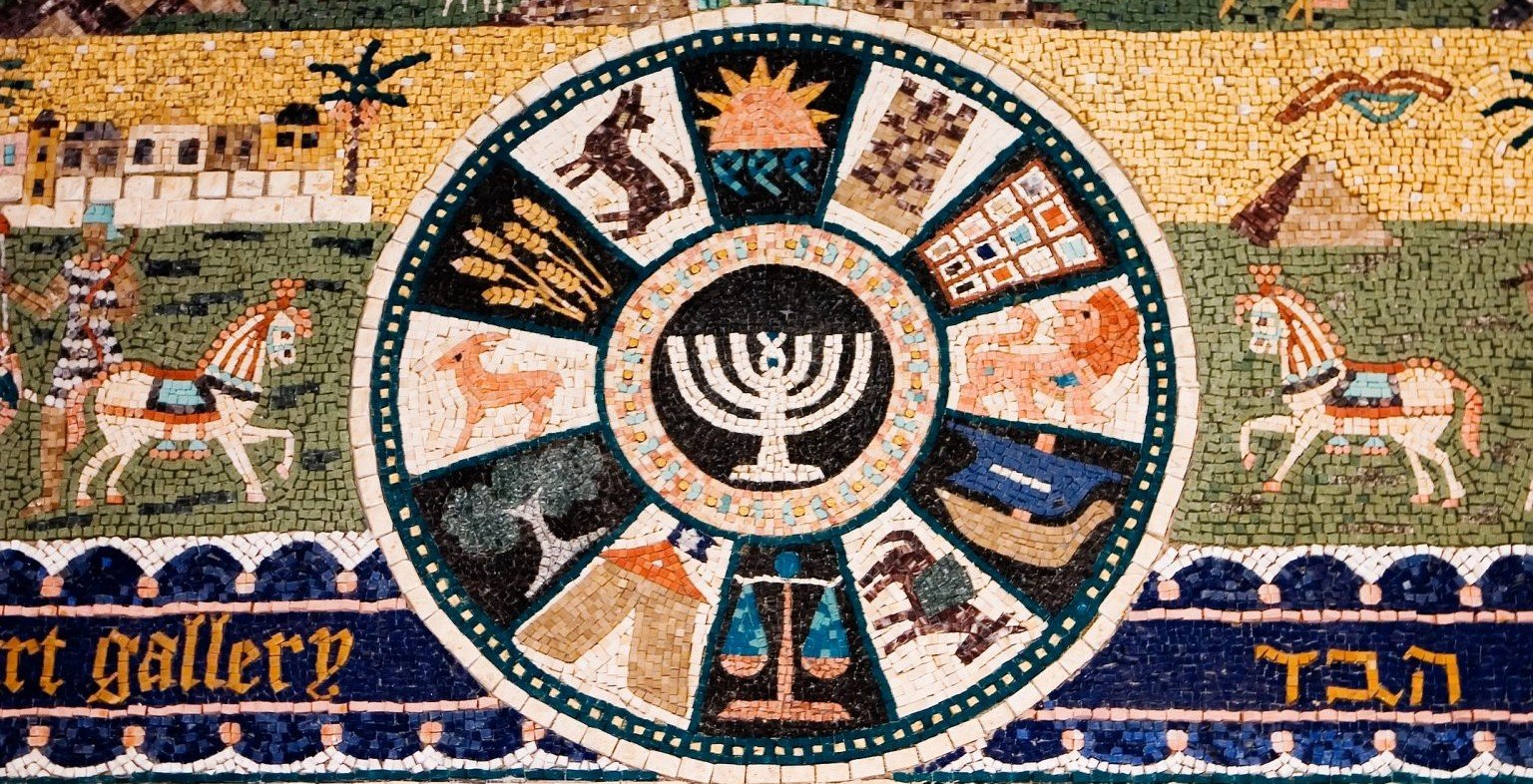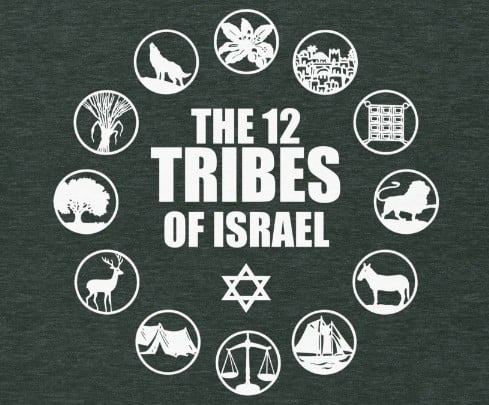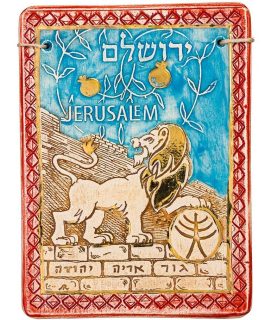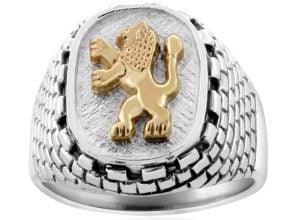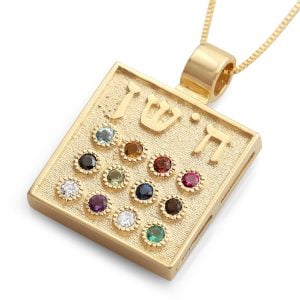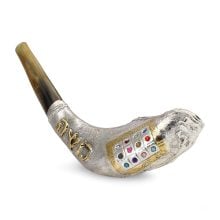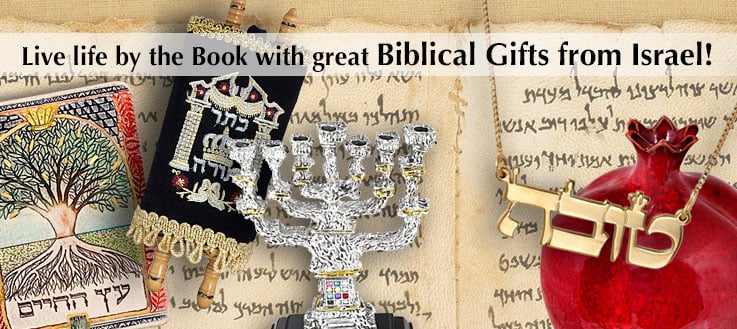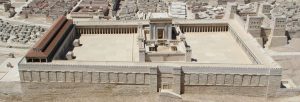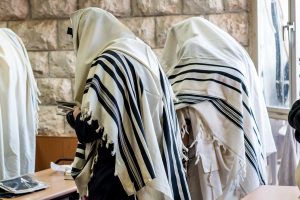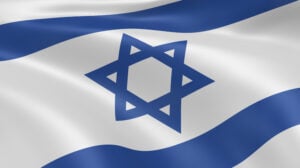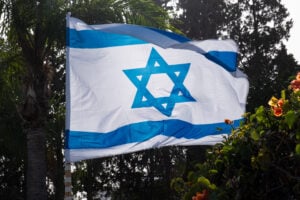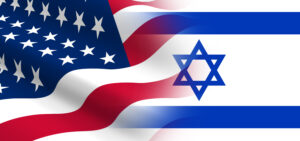Curious about the famous Biblical 12 Tribes of Israel? We have your primer on their origins, their significance and symbolism today, and who their modern descendants are!
Biblical Origins
The Tribes of Israel, or in Hebrew Shivtei Yisrael, were the descendants of the 12 sons of our Biblical patriarch Jacob:
Reuben, Simeon, Levi, Judah, Issachar, Zebulun, Dan, Naphtali, Gad, Asher, Benjamin, and Joseph, with the tribe of Joseph later split into the tribes of Ephraim and Menasseh named after Joseph’s sons.
>>So while the Torah originally enumerates 12 tribes from each of the 12 sons of Jacob, historically there actually ended up being 13 tribes!
>>The main significance to maintaining the distinct tribes was that the Land of Israel was divided into 12 sections, with each tribe being allotted one portion except for the Tribe of Levi.
>>Those descended from Levi made up the Priestly tribe, and instead of land had jurisdiction over the Temple in Jerusalem.
Lion of Judah
>>Due to the might and significance of the Tribe of Judah it became traditionally associated with a symbol of a roaring lion, representing leadership, strength, and fearlessness.
>>Today the “Lion of Judah” symbol is also the official emblem of the city of Jerusalem, and is a common motif in Jewish art and jewelry.
If you love the mighty history of the Tribe of Judah, check out magnificent Lion of Judah jewelry from Israel!
The distinct tribes making up the nation of Israel were also recognized in Jewish worship in ancient times: The High Priest (Kohen Gadol) wore a special Breastplate in the Tabernacle and the Holy Temple in Jerusalem known as the Hoshen, which according to Biblical instructions was made up of 12 different precious gemstones to represent each of the 12 tribes.
>>This symbolized the tribes’ uniqueness as well as their unity and role in making up the People of Israel. While the Hoshen no longer exists as a ritual item due to the destruction of the Temple, it has remained a powerful image in the Jewish artistic imagination.
You too can connect with the powerful message of unity of the Priestly Breastplate, with beautiful Hoshen jewelry from Israeli artists!
See where it all began, with our beautiful Hebrew-English Bibles and inspiring Torah scroll replicas from the Land of Israel!
Modern Descendants & Lost Tribes
What happened to the Biblical Tribes, and who are their descendants today?
>>Today’s kohanim (Jews holding a priestly status) and leviim (Levites) are believed to be descendants of the Tribe of Levi. The tribe still holds a unique religious function in Judaism despite the lack of a Temple, with kohanim and leviim holding special, albeit now much more limited, roles in Jewish ritual life.
>>Other modern Jews are usually considered to be part of the Tribe of Judah.
>>The Tribe of Benjamin was absorbed into the Tribe of Judah, likely around the sixth century BCE.

The other 10 tribes are considered to have been “lost,” and seem to have disappeared from history during conquests of the Land of Israel by Assyrians and Babylonians in antiquity. They are today known as the “Lost Tribes of Israel” or the “Ten Lost Tribes,” and are the subject of fascination and speculation by both Jews and non-Jews alike as to what may have happened to their descendants.
Some theories regarding modern descendants of some of the “Lost Tribes” include:
>>Some Persian Jews and Indian Telugu Jews claim to be from the Tribe of Ephraim.
>>Ethiopian Jews claim descent from the Tribe of Dan, while Bnei Menashe, a group from India, believes they come from the Tribe of Menasseh.
>>There is a theory that the modern Druze community in Israel are descendants of the Tribe of Zebulun.
>>Some people theorize that the Pashtuns of modern-day Afghanistan are descended from one or more of the lost tribes.
>>The Samaritans, a community that split from mainstream Judaism around the 8th century BCE, consider themselves to be descendants of the Tribes of Menasseh and Ephraim as well as Levi.
Despite these theories and delineations, the tribal divisions are not nearly as important in Judaism today, and modern Jews generally consider themselves to be one “tribe.”
The Biblical Tribes are, however, a significant part of our history and origins, and one way of connecting to our Biblical roots is by honoring and remembering the tribes that once made up the Nation of Israel!
You can connect to this history in a meaningful way through special 12 Tribes gifts from Israel – and be sure to check out our top favorites!

See our top 12 gifts from Israel to bring the 12 Tribes into your life, from stunning jewelry to beautiful home décor.
